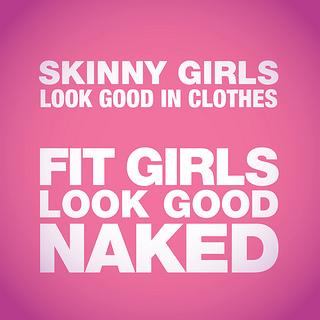
Let’s stop idealizing bodies altogether
The “ideal figure” of a woman has changed a lot over the years. But beauty has undeniably always been determined in relation to patriarchal standards.
During the Italian Renaissance, fuller figures were determined to be a direct reflection of one’s husband’s social and economic status and therefore plump bodies were considered ideal. By the Victorian Era, the hourglass figure — made possible by corsets — was popular. In the 1920s, when women won the right to vote, a sort of curve-less, boyish figure was fashionable. Marilyn Monroe arguably popularized a curvy figure with a slim waist but then the 1960s saw the origins of the skinny, tall, supermodel look that has since dominated the image of the “ideal figure” of a woman in Western culture and media. Today we’re in the midst of another shift in standards of beauty: It seems that “strong is the new skinny.”
I am a junior in college, and I would say that body image is a pretty significant concern on campus. People at my college are both skinny and fit. Almost half of the student body participates in varsity athletics, and even more participate in club sports.
The eruption of this healthy trend in the United States can be positive. Eating healthy is obviously optimal for one’s health, and working out is good for the body and the soul. As a runner myself, I can speak to the experience of the runner’s high and know few things feel better or put me in a better mood than finishing a long run or hard workout.
But this new craze doesn’t really seem to be about health. What’s sold to us as strength and power is actually just another unattainable standard that’s actually not all that different from the aforementioned body ideals popularized throughout the ages. The emphasis on “fitness” isn’t actually about feeling better: It’s about creating a body that will attract others. Working out in this way is just another cultural fad designed to show off, police, and contain girls’ and women’s bodies.
For example, I recently attended a group cardio session led by a female trainer who decided to motivate us by saying “Spring Break is coming up, right? Think about how you want to look in bikinis on Spring Break. Now do five more reps!” I thought nothing of it at the time, but looking back I realize I shouldn’t do five more reps because I will achieve that perfect “bikini body.” I should workout because it makes me feel good about myself.
Even working out won’t enable every woman to obtain the unattainable version of beauty this fit standard perpetuates, though. No matter how many reps they do, most women will not be able to fit the standard of having large breasts and a big bum but also a flat and toned stomach; muscle but not too much muscle; strong legs but also a thigh gap. These standards of beauty are unreal — they are literally anatomically impossible.
The media constantly reinforces this. Consider magazines that focus their fitness sections on bettering your butt or attaining that perfect thigh gap. Look at the way the media often picks women athletes’ bodies apart, deeming one athlete’s breasts too small, another’s thighs too muscular, and yet another’s boob-to-butt ratio off. These women work their asses off and yet are criticized for the physical manifestation of their hard work.
Ultimately, we must stop promoting any kind of ideal body — whether that’s a muscular shape or even a curvy one. Women come in all different shapes and sizes, wear all different types of clothing, and have all different kinds of personalities and we should be able to be happy because of — not in spite of — these things. We must reject these standards because as long as we are confident in ourselves, media outlets have no power to tell us what the “ideal figure” is.

